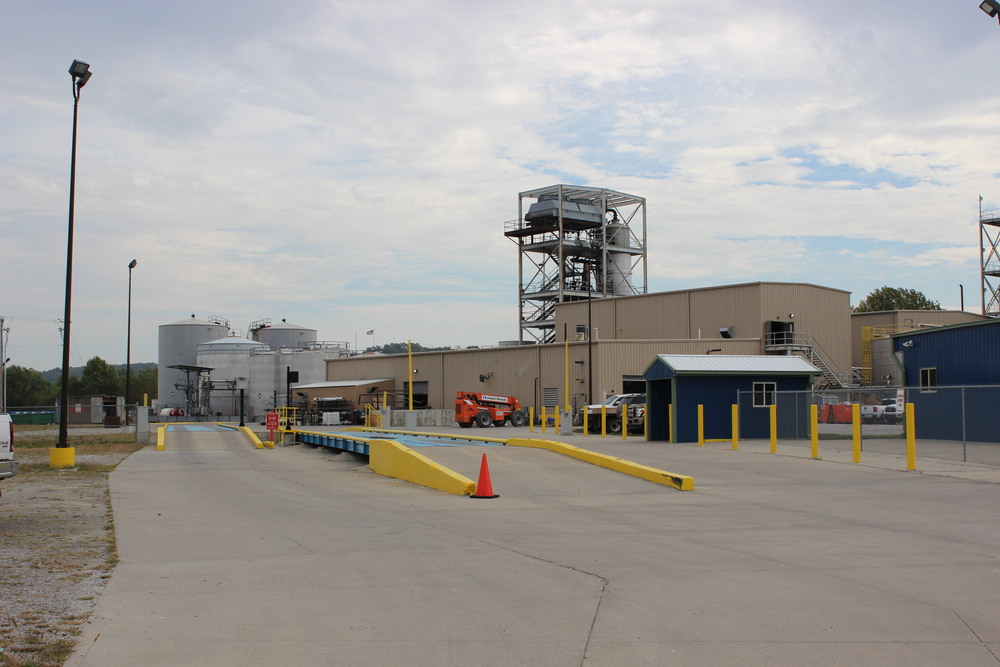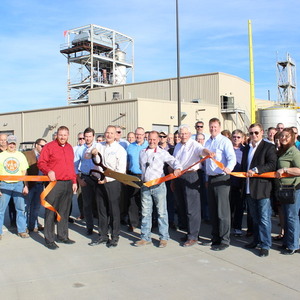HPB celebrates grand opening of biodiesel production plant



Photo: High Plains Bioenergy
October 19, 2016
BY High Plains Bioenergy
High Plains Bioenergy celebrated the grand opening of its newest biodiesel production plant, HPB-St. Joe Biodiesel, located in St. Joseph, Missouri, on Oct. 17. The plant will use vegetable oils as the primary feedstock to produce up to 28 MMgy of biodiesel.
Community and company dignitaries participated in a ribbon-cutting ceremony for the plant followed by an open house and plant tour.
The grand opening celebration marks High Plains Bioenergy's second venture to produce biodiesel that is a renewable, clean-burning fuel produced from natural oils, such as vegetable oils, and can be used with petroleum-based diesel fuel in existing diesel engines with little or no modification. HPB is a subsidiary of Seaboard Foods.
“The addition of HPB-St. Joe Biodiesel further solidifies our dedication to finding alternative energy sources,” said Gary Louis, executive vice president of Seaboard Foods. “This plant will help us continue to maximize our marketing opportunities by offering a variety of product options to our current and future customer base by combining the St. Joseph plant’s production along with the production at the Guymon, Oklahoma, biodiesel plant. The addition of HPB-St. Joe Biodiesel will offer customers a wider range of biodiesel products for different environmental conditions while expanding our distribution footprint.”
Total biodiesel production capacity will be approximately 60 MMgy. Limited production is underway in St. Joseph and product is currently available by truck and rail.
HPB is a wholly owned subsidiary of Seaboard Foods, a division of Seaboard Corp. As an integrated food company, Seaboard Foods controls every step from farm operations to pork processing and raises and cares for pigs to produce pork that is served on tables throughout the world. HPB is dedicated to finding alternative energy sources from and for the Seaboard Foods connected food system. In addition to biodiesel production, HPB operations include biogas generation through anaerobic digestion of waste water and compressed natural gas facilities.
Advertisement
Advertisement
New plant location
HPB-St. Joe Biodiesel
5701 Stockyards Expressway
St. Joseph, MO 64504
Capacity
At full production capacity, it will produce 28 MMgy.
Feedstock
The plant will use regionally sourced feedstocks, such as corn oil and animal fats, to produce biodiesel.
Operations
The plant is in production and will be running 24/7.
Sales & Marketing
Product is available for sale by truck and rail. The plant will focus on lower cloud point specifications.
Employees
The plant will have 47 employees when in full production.
Advertisement
Advertisement
Related Stories
The USDA maintained its outlook for 2025-’26 soybean oil use in biofuel production in its latest World Agricultural Supply and Demand Estimates report, released Aug. 12. The forecast for soybean oil prices was also unchanged.
U.S. soybean production for 2025 is forecast at 4.29 billion bushels, down 2% when compared to last year, according to the USDA National Agricultural Statistics Service’s latest monthly Crop Production report, released Aug. 12.
California’s new specified source feedstock attestation requirement: A critical new compliance step for renewable fuel producers
As of July 2025, California’s SCFS requires renewable fuel producers using specified source feedstocks to secure attestation letters reaching back to the point of origin. This marks a significant shift in compliance expectations.
At the University of Missouri, plant biochemist Jay Thelen is using arabidopsis as a powerful model to explore ways to boost oil production — an important step toward creating more sustainable, plant-based energy sources.
Iowa farmers have a new market opportunity for their 2025 soybean crop. Landus is expanding its Clean Fuel Regulation initiative, made possible by recent policy changes expected to increase Canada's demand for liquid biofuel.
Upcoming Events










